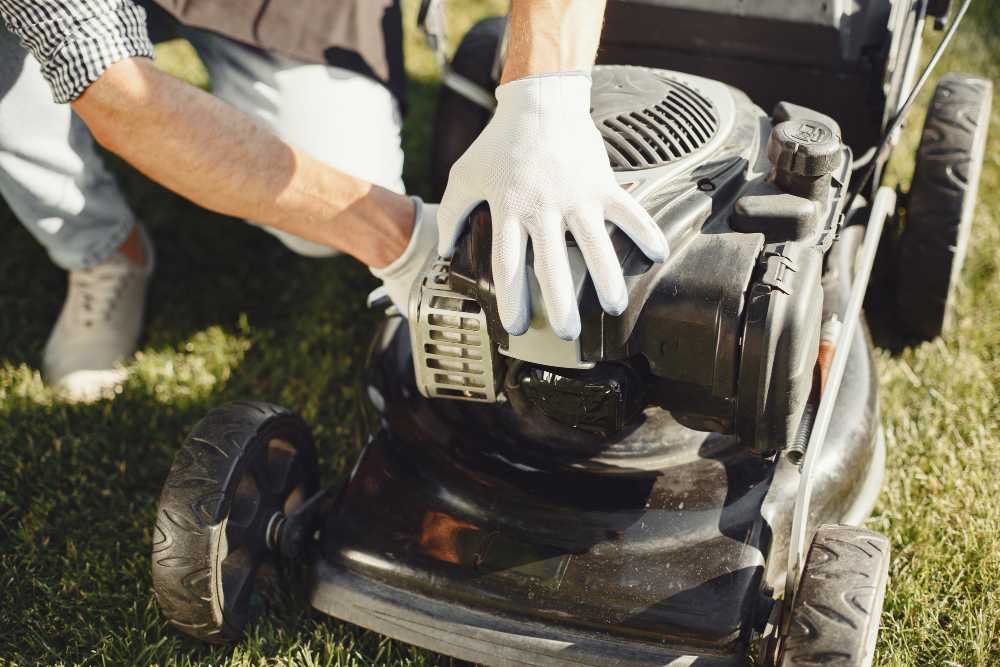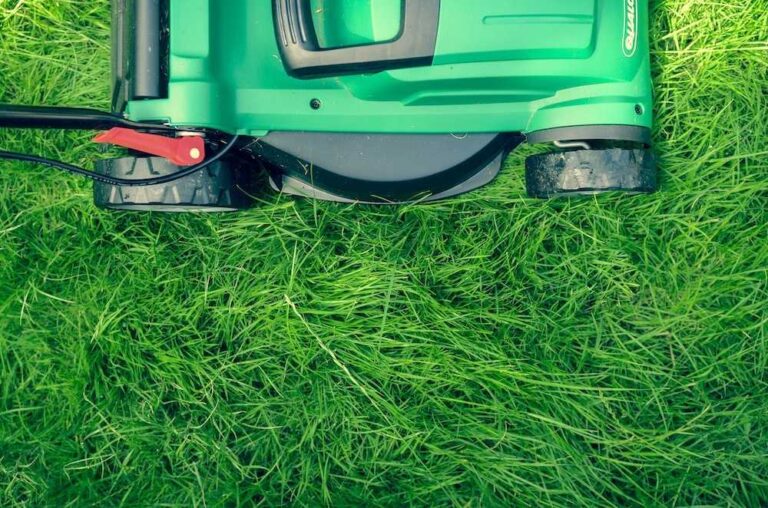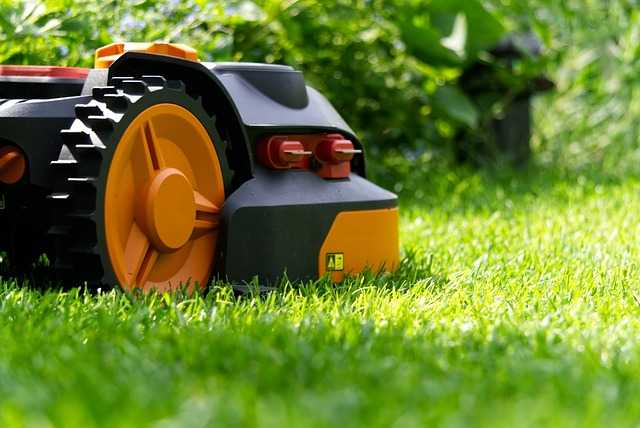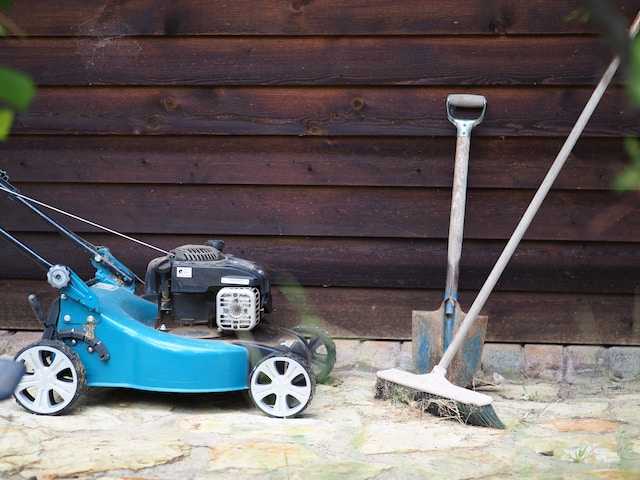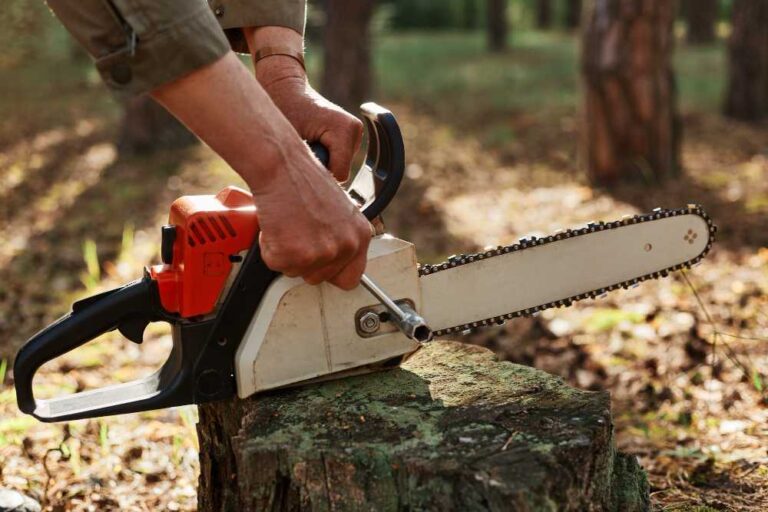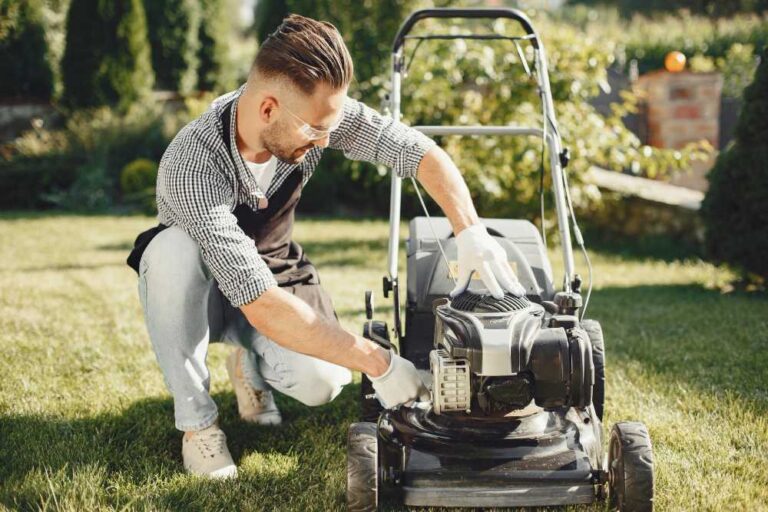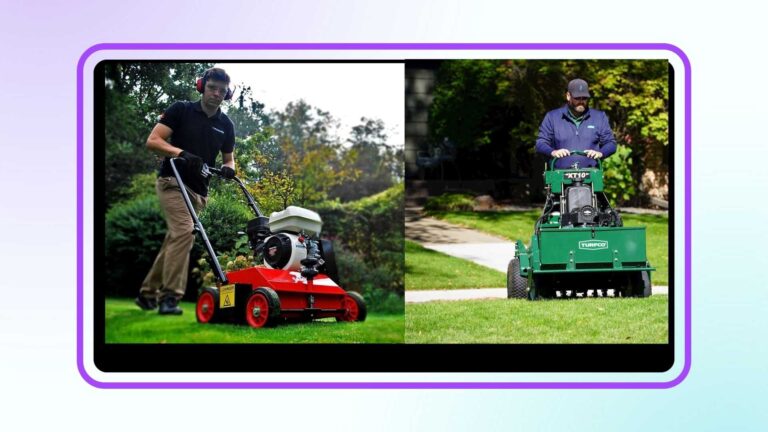Top 20 Common Problems with Husqvarna Riding Mowers: A Comprehensive Guide
Husqvarna has, over the years, cemented its reputation as a reliable provider of various lawnmowers – ranging from self-propelled models to versatile riding mowers. However, like any mechanical device, Husqvarna riding mowers can face problems related to usage, maintenance, or faulty parts. Below, we will delve into the 20 common problems with husqvarna riding mowers and possible solutions to these issues:
Top Common Problems With Husqvarna Riding Mowers
While husqvarna riding mowers are renowned for their top-tier performance, ergonomic designs, and versatility, they are subject to various problems. Here are 20 of these common issues and solutions to rectify them:
1. Starting Issues
One of the most common problems with Husqvarna riding mowers is difficulty in starting. This can be due to various reasons such as a dead battery, a faulty solenoid, dirt build-up in the carburetor, or a clogged fuel filter.
To ascertain the problem, start by checking the battery. If it’s not charged, recharge it. Examine the solenoid by listening for a clicking sound when you turn the key. No sound may indicate a defective solenoid, which needs replacement. If these components seem fine, clean the carburetor, and check the fuel filter – a dirty one might need replacing.
2. Dull / Damaged Blades
Another set of issues arises when cutting grass unevenly or inefficiently, usually due to a dull or damaged mower blade. Regular usage or hitting hard objects like rocks and sticks can lead to dents or dullness.
While you can sharpen the blades at home with a grinder, getting the task done professionally can ensure a smooth cut and balanced blades. If the blade is damaged, you should replace it.
3. Weak Hydrostatic Transmission
Husqvarna riding mowers often face issues with weak hydrostatic transmission. These transmissions, designed to deliver a smooth ride, can have problems resulting in significant speed loss or complete failure to operate, leaving the mower unable to move.
Causes can vary from aged transmission belts to damaged fan blades. This makes the mower inefficient and hinders the overall performance. Compromising on the operational capacity, this issue can lead to frequent and costly maintenances, unnecessarily escalating the mower’s upkeep cost. Regular inspections and timely maintenance are recommended to mitigate this problem.
4. Inefficient Mowing
Sometimes, despite the mower being in running condition, it fails to cut as per expectations. The reasons can be a jammed cutting deck, uneven tire pressure, or mishandling of the cutting height adjustment.
Unclog any grass stuck under the cutting deck and ensure that all four tires have even pressure as specified by the manufacturer. Lastly, always adjust the cutting height according to the type and length of the grass for a neat mowing.
5. Reduced Power
Another common issue is a gradual or sudden reduction in the mower’s power levels, which could prevent the mower from effectively cutting grass or propelling itself uphill. This could be due to issues with the fuel or air supply, clogged carburetor, or problems with the engine’s spark plug.
Firstly, check the mower’s fuel supply, and ensure the air supply isn’t blocked. Secondly, consider cleaning the carburetor, which if clogged, can interfere with the fuel-air mixture necessary for engine combustion. Lastly, inspect the spark plug. If it is corroded or fouled, it can hinder the engine’s ability to ignite the fuel-air mixture.
6. Clogged Discharge Chute
One of the most recurrent problems with Husqvarna mowers is the clogging of the discharge chute. The function of the discharge chute is to dispense grass clippings smoothly out of the deck of the mower. However, when compacted grass or debris clog the discharge chute, it hinders the efficient mowing of your lawn.
This clogging typically occurs when the mower cuts wet or too tall grass, amassing in clumps that congest the chute. In such cases, ensure your lawn is reasonably dry before mowing. Cut tall grass gradually, adjusting the cutting height to reduce strain on the mower. Regular cleaning after mowing also prevents chute clogging.
7. Poor Drive Wheel Traction
One of the essential features of any riding lawn mower is the drive wheel. Without proper traction, the mower’s movement could be severely hampered, leading to an ineffective mowing session. Unfortunately, Husqvarna riding mowers may occasionally suffer from this issue.
Poor drive wheel traction is usually down to worn-out tires. The tires may also lose traction due to inflation disparity or presence of grass clippings, moisture, mud or oil. Regularly inspect and clean the tires ensuring optimal inflation. Replace old, worn-out tires to maintain proper traction.
8. Broken or Loose Drive Belt
The drive belt is a crucial component of a Husqvarna riding mower, facilitating blade action and the motion of the mower. Over time, the drive belt can deteriorate, loosen or break due to wear and tear, which can significantly affect the performance of the mower.
Loose belts may result in slower blade speed and consequently an unclean cut, while a broken belt can halt the operation of the mower. As part of your maintenance routine, routinely inspect the condition of the drive belt. Loose belts should be adjusted or replaced, while broken ones will necessitate an immediate replacement for the mower to function correctly.
9. Leaks
Occasionally, you may find your Husqvarna riding mower leaking oil or gas. This can be traced to various reasons such as a loose drain plug, broken seals/gaskets, or cracks in fuel lines/tanks. Considering the hazards associated with oil or gas leaks, it’s essential to address these promptly.
Ensure you tighten loose drain plugs and replace worn-out or damaged seals and gaskets. If the fuel line or tank is compromised, you’ll need to replace it to prevent further leaks. Always have a mechanic perform these repairs if you’re uncomfortable doing them yourself.
10. Overheating
Overheating is a common problem affecting the performance of many riding lawn mowers, including Husqvarna models. It can be caused by clogging of the mower’s cooling fins with dirt and debris. An overheated engine can damage internal components, impacting the longevity of your mower.
To prevent overheating, regularly clean the engine’s cooling fins and ensure the radiator is clear of dirt. Replace damaged cooling fans promptly, and regularly check the coolant levels if your model includes a liquid-cooled engine.
11. Difficulty in Acceleration
One of the most common problems with husqvarna riding mowers frequently reported by users involves acceleration difficulty. Users may experience loss of speed or sluggish movement, which can be incredibly frustrating when trying to maintain a large lawn. The key cause usually resides in the mower’s carburetor, as its function is to regulate the flow of fuel to the engine. Dirt or viscosity buildup can clog the carburetor, inhibiting its operation.
Troubleshooting this problem ideally requires expert assistance to ensure the correct disassembling, cleaning, and reassembling of the carburetor. However, for simple cleanups, removing the casing to clean the dirt or deposits using a carburetor cleaner can fix the problem. Regular maintenance of the carburetor is essential for optimal performance.
12. Smoke Emission
Operating a Husqvarna riding mower should not feel like running a stand-alone smoke factory. Consequently, if your mower is emitting smoke – black or white, it’s a hint towards an underlying issue. White smoke usually signifies an overfilled oil chamber, while black smoke indicates an overly rich air-fuel mixture or a dirty air filter.
Addressing smoke emission entails adjusting the oil levels and ensuring that the mower is stationed on level ground during refills. Likewise, replace or clean a dirty air filter, and if necessary, have a professional examine the carburetor.
13. Steering Difficulties
The ease of maneuverability distinguishes a superb mowing experience from a dreadful one. A Husqvarna riding mower should offer smooth steering, but occasional challenges might occur. Loose or damaged steering components often cause this problem. Signs of such issues include stiff steering or inability to steer in one or both directions.
To resolve this, regularly check the mower’s front-end suspension system. Look out for component wear-and-tear or loose hardware that may need tightening or replacement. If your mower has a rack and pinion steering, manual adjustment can alleviate the problem. Otherwise, professional servicing might be necessary.
14. Battery Drains Quickly
A rapidly draining battery could significantly impair your ability to complete tasks with the Husqvarna riding mower. Besides a defective battery itself, other reasons for this problem could be corroded battery terminals, an underperforming alternator, or even a parasitic drain where power continues to leak after shutting off the machine.
Routine checks on the battery, ensuring clean and tight connections, can significantly mitigate this issue. If battery problems persist, consider checking the alternator’s output using a multimeter. When all else fails, replacing the battery may be the best course of action to restore your mower’s performance.
15. Frequent Drive Belt Replacement
The drive belt of a Husqvarna mower is essential for transferring power from the engine to the wheels. A recurring need for replacement may imply an inherent problem. A slack or poorly routed belt, misaligned pulleys, or the use of a non-OEM belt could be culprits in this.
Review the belt routing plan in your user manual and verify that the belt’s positioning is correct. Consequently, inspect the belt for signs of wear and adjust the tension if too slack. Regularly check the pulleys for possible misalignment and employ only OEM parts when replacing the drive belt.
16. Difficulty Engaging Blades
One of the first concerns that users experience with Husqvarna riding mowers is trouble engaging the blades. When you encounter this problem, the mower blade doesn’t spin once activated. This issue can occur due to various reasons. The most common cause is a malfunctioning blade clutch, which may result from overheating or wear and tear. Besides, a damaged belt or an issue with the mower’s safety switches can also lead to difficulties in engaging the blades.
If your mower’s blades refuse to engage, a viable solution may be to inspect the PTO clutch, mower belt, and safety switches thoroughly. You might need to replace a worn-out part or adjust the safety switches to resolve the issue. Alternatively, consider hiring professional repair services to check and rectify the problem.
17. Inefficient Grass Mulching
Husqvarna riding mowers may sometimes exhibit inefficient grass mulching. You might find inadequately mulched grass clumps after mowing, which can make your lawn look untidy. This deficiency often results from a dull or damaged blade that can’t chop grass into small pieces.
To improve your mower’s mulching efficiency, make sure the blades are sharp. Regularly inspect the blades for any signs of damage and replace them if necessary. Additionally, keeping your lawn dry before mowing can significantly improve your mower’s mulching ability.
18. Unusual Vibrations
Some users of Husqvarna riding mowers report unusual vibrations during operation, which not only hampers mowing quality but can also be a safety concern. Worn out or loose parts, such as the mower deck, motor mount, or blade, often cause these unusual vibrations.
If your mower starts vibrating unusually, attempt to identify the source of these vibrations. If it’s a loose part, tightening it would be sufficient. If the issue persists, the part may be worn out, requiring replacement by a professional.
19. Uneven Cutting
Uneven cutting is one of the most noticeable problems with Husqvarna riding mowers. This issue makes your lawn look poorly maintained and can be quite frustrating. The usual culprit for this problem is inconsistent mowing height, dull or bent blades, or an unlevel mowing deck. An imbalanced distribution of weight can also lead to uneven cutting.
To solve the problem, start by adjusting the mower’s height on all sides. Pay attention to the blades’ condition and replace them immediately if they are dull, bent, or damaged in any way. Lastly, ensure the mower deck is in a balanced position before commencing with the mowing operation.
20. Difficulty Shifting Gears
Another of the common problems with husqvarna riding mowers some users face is difficulty shifting gears. This complication makes it challenging to switch between different speed levels, greatly affecting the mower’s performance. The usual causes for this issue are a worn-out gear shifting system, a malfunctioning clutch, or a transmission problem.
If you experience issues when shifting gears, start troubleshooting by inspecting the gear shifting system. If you notice signs of any glaring issues, consider replacing the damaged part. If the problem persists, consult a lawn mower mechanic to inspect the mower’s transmission and clutch.
Regular Maintenance Tips to Avoid Common Problems with Husqvarna Riding Mowers
Keeping your Husqvarna riding mower running smoothly requires regular maintenance. Appropriate upkeep not only ensures smooth operation but also extends the lifespan of your equipment. If you mow frequently, particularly in demanding situations such as rough terrains, it’s even more crucial. Preventing these common problems with husqvarna riding mowers involves conducting regular maintenance, including:
· Maintain the mower’s oil level and replace oil
Start with the basic checks. Regularly examine the level of oil. Running your mower with an inadequate amount might result in damage or breakdown. To check and confirm the level of oil, check whether the engine is cool, remove the dipstick, clean it, and then put it back. The oil should be between the full and add marks.
· Regularly Clean Air Filter and Mower Deck
The air filter also needs to be clean as it ensures that your engine gets clean air. The engine might get seriously damaged with a clogged air filter. Therefore, it is essential to check and replace or clean the air filters at least once in the mowing season.
Regularly cleaning the mower deck is vital as well. Over time, grass clippings can build up under the deck, potentially causing rust and diminishing your mower’s cutting capability. After each mow, clean the deck by removing grass clippings, using a brush or a blower. In situations where access to water allows, you can utilize the water hose port that Husqvarna riding mowers typically feature to wash out the deck.
· Sharpen Mower Blades Regularly
Ensure the mower blades are sharp as well. Dull blades rip the grass instead of making a clean cut, leaving your lawn looking ragged and as well as less healthy. Depending upon usage, you should ideally sharpen your mower blades a couple of times during the mowing season.
· Examine Spark Plug Regularly
A faulty spark plug can lead to many issues, including difficulty starting the mower, unclean cuts, or a rough-running engine. Spark plugs are an often overlooked component, yet they have considerable impact on your mower’s performance. It is advisable to replace them annually to ensure optimum performance.
· Maintain Tire Pressure
Maintaining the appropriate tire pressure is also crucial. Uneven tire pressure can lead to uneven mowing. Hence, check the tire pressure using a tire gauge at least once a month. Follow the manufacturer’s recommendation regarding the correct pressure.
· Proper Storage
Notably, proper storage of your Husqvarna riding mower during off-seasons also enhances its operational efficiency. Cleaning it thoroughly and removing any dirt or grass clippings before storage lessens the chances of corrosion. Besides, it is wise to disengage any attachments, such as a grass catcher or mulch plug.
Regular maintenance of your Husqvarna riding mower will prolong its lifespan, maintain its optimum performance, and save you from unnecessary repair expenses. Therefore, follow the manufacturer’s maintenance schedule and, if possible, keep a maintenance log.
The Bottom Line
Husqvarna riding mowers, despite their occasional mechanical issues, offer sturdy design and efficient mowing capabilities that make them a favored choice among many homeowners. By addressing these common problems and maintaining regular maintenance practices, your Husqvarna riding mower can be a convenient and durable lawn care companion for many years.
